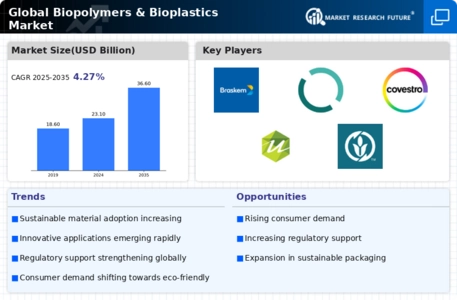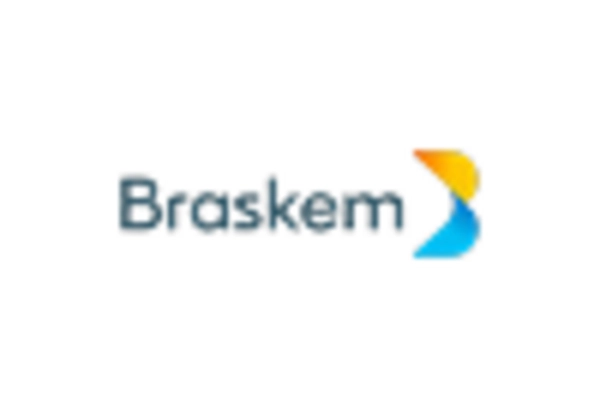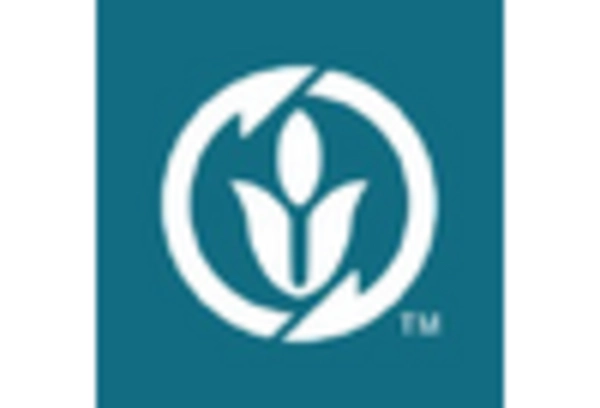Leading market players are investing heavily in research and development to expand their product lines, which will help the biopolymers & bioplastics market grow even more. Market participants are also undertaking various strategic activities to expand their global footprint, with important market developments including new product launches, contractual agreements, mergers and acquisitions, higher investments, and collaboration with other organizations. To expand and survive in a more competitive and rising market climate, Biopolymers & Bioplastics industry must offer cost-effective items.
Manufacturing locally to minimize operational costs is one of the key business tactics manufacturers use in the global Biopolymers & Bioplastics industry to benefit clients and increase the market sector. The Biopolymers & Bioplastics industry has offered some of the most significant medical advantages in recent years. Major players in the Biopolymers & Bioplastics market, includingBASF SE (Germany),Arkema (France),Braskem (Brazil), Biome Bioplastics Limited (US),Covestro (Germany), Kaneka Corporation (Japan), Mitsubishi Chemical Corporation (Japan), United Biopolymers (US),NatureWorks Inc. (US),Plantic Technologies Limited (Australia),SKYi Composites (India)., and others, are attempting to increase market demand by investing in research and development operations.
Nature Works LLC is an international company that manufactures bioplastics—polymers derived entirely from plant resources—as an alternative to conventional plastic made from petroleum.Nature Works agreed with ABB technology to automate a new bioplastics plant in Thailand. The advancements aim to expand the production capacity of polylactic acid (PLA) to cater to the growing industry demand for sustainable materials.
Braskem is contributing to the value chain to strengthen the Circular Economy. Its more than 8.000 team members are dedicated to improving people's lives through sustainable solutions in chemicals and plastics. With its corporate DNA rooted in innovation, Braskem offers a comprehensive portfolio of plastic resins and chemical products for diverse industries, such as food packaging, construction, manufacturing, automotive, agribusiness, health and hygiene, and more. Braskem is globally headquartered in Brazil, and its EMEA head office is based in Rotterdam – NL.
There are more than 41 industrial units in Brazil, the United States, Mexico, and Germany, exporting its products to clients in over 80 countries. Braskem and Ledesma (Argentina), makers of regular agro-industrial items, have teamed up to convey Ledesma + Bio, a line of 100 percent sustainable journals made completely of sugarcane. Such drives are supposed to take special care of the bioplastics and biopolymers market requirements.
Leading global diversified chemical company LG Chem (KRX: 051910) said today that it has signed a memorandum of understanding with ADM (NYSE: ADM), a global leader in nutrition and bio solutions, to explore US-based production of lactic acid to meet the growing demand for a wide variety of plant-based products including bioplastics.
Under an agreement signed at ADM’s global headquarters in Chicago by ADM Chairman and CEO Juan Luciano and LG Chem Vice Chairman and CEO Hak Cheol Shin, LG Chem Co., Ltd., will take steps toward launching a joint venture with wholly-owned subsidiary Archer Daniels Midland Company (“ADM”) early next year aimed at building, owning and operating a corn-based high purity lactic acid facility on commercial scale in the US.


















Leave a Comment